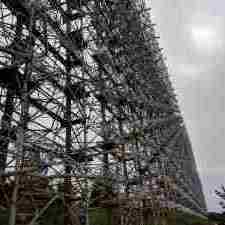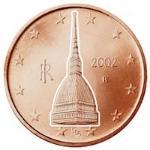Forum
-
Forum PLC
-
- 112k
- messaggi
-

- Scalatura analogica
- Da acquaman,
-
- 10,4k
- messaggi
-
- PLC Schneider e IO LINK IFM
- Da Elettro19,
-
- 12,7k
- messaggi
-
- OMRON CJ2M-CPU33+DeviceNet Convertitore ADFWeb DeviceNet-Modbus RTU
- Da lupo_cattivo,
-
- 1,5k
- messaggi
-

- Panasonic o LG?
- Da Livio Orsini,
-
- 90
- messaggi
-

- Eaton easy e4 e stringhe di testo
- Da Livio Orsini,
-
- 19,8k
- messaggi
-
- test I/O beckoff
- Da OBY,
-
- 7k
- messaggi
-
- 153
- messaggi
-
- VAPT: Siemens S7 1200/1500 Project Password Vuln
- Da pigroplc,
-
-
Forum Automazione Industriale
-
- 23,5k
- messaggi
-
- Elenco Testi Faceplate Unifed
- Da marchinoktm,
-
- 65,1k
- messaggi
-
- Motore BLDC lavatrice LG
- Da fabio0564,
-
- 24k
- messaggi
-
- 15,4k
- messaggi
-
- adattatore router 4g - antenna esterna
- Da aisenauer,
-
- 454
- messaggi
-
- 1,8k
- messaggi
-
-
Forum Impiantistica elettrica
-
- 123,4k
- messaggi
-
- Dimensione Gewiss restart vs vecchi MTD
- Da Netsurfer,
-
- 21k
- messaggi
-

- Cavo per sistema Dardo della OVA
- Da ufficiotecnico,
-
Impianti elettrici
- Interruttori differenziali, magnetici e termici
- Qualità dell'energia elettrica
- Normative e sicurezza
- Didattica elettrotecnica
- Schemi e applicazioni di circuiti elettrici
- Citofoni, videocitofoni e intercomunicanti
- Cancelli elettrici
- Sistemi e installazioni per la diffusione sonora
- Altri argomenti elettrici
- 248,9k
- messaggi
-
- 34,9k
- messaggi
-

- ingresso shelly e tensione indotta
- Da ALLUMY,
-
Illuminotecnica
- Illuminazione Pubblica (stradale)
- Illuminazione Pubblica (arredo urbano)
- Illuminazione pubblica (regolatori di flusso)
- Illuminazione pubblica (Led e Fotovoltaico)
- Illuminazione a Led
- Illuminazione interni
- Illuminazione di emergenza
- Segnaletica luminosa stradale
- Normative e Sicurezza (illuminotecnica)
- Altri argomenti su illuminazione
- 12,1k
- messaggi
-
- Suggerimenti illuminazione sgabuzzino con sensore movimento
- Da Marco Fornaciari,
-
-
Forum Elettronica
-
Elettronica
- Elettronica generica
- Microprocessori Hw & Sw
- Arduino e Raspberry
- Apparati, Schemi & circuiti
- Circuiti stampati (PCB) e CAD per disegno elettronico
- Componenti elettronici ed equivalenze
- Droni
- Strumentazione elettrica ed elettronica
- Guasti già risolti Elettronica
- Altro su elettronica
- Elettronica Fai da te
- 169,7k
- messaggi
-

- riparate luce led da 2 euro
- Da Livio Orsini,
-
Radiocomunicazioni
- Radioamatori
- CB e 43MHz
- PMR e LPD
- Altri RTX (bande civili, nautiche, ecc)
- SWL (radioascolto)
- Autocostruzione
- Antenne, cavi e accessori
- Amplificatori lineari, alimentatori e strumentazione
- Microfoni e dispositivi audio
- Eventi e fiere radiantistiche
- Altri argomenti radio
- Riparazioni e modifiche
- Modi digitali e software
- 4,7k
- messaggi
-
-
Forum Sicurezza
-
- 1
- messaggio
-

- ATTENZIONE: Leggere attentamente prima di postare
- Da Gabriele Riva,
-
- 172k
- messaggi
-

- Radiocomando bentel kyo
- Da ROBY 73,
-
- 44,5k
- messaggi
-
- 3,1k
- messaggi
-
- Badge e trasponder
- Da mithe,
-
-
Forum Meccanica - Idraulica - Pneumatica - Oleodinamica
-
- 975
- messaggi
-

- Acqua sanitaria contaminata
- Da antoniob,
-
- 24,4k
- messaggi
-
- Autoclave che non va
- Da Edoardo 007,
-
- 9,9k
- messaggi
-

- Problema sfiato aria durante fermata compressore
- Da Stefano Dalmo,
-
- 2k
- messaggi
-
- Schema oleodinamico Brichettatrice
- Da giulio1982,
-
-
Forum Termotecnica
-
- 20,8k
- messaggi
-
- Messa a terra per Struttura FV
- Da Blasco5507,
-
- 96,8k
- messaggi
-
.thumb.jpg.63dc4f62a2bf61b901880191128e244e.jpg)
- Errore di collegamento unità interne/esterne: conseguenze reali
- Da Alessio Menditto,
-
- 137k
- messaggi
-
- Domanda su caldaie
- Da firstlionsra,
-
- 16,7k
- messaggi
-
- Freon
- Da karlo maders,
-
- 2,4k
- messaggi
-
- Caldaia in casa e necessità di tubo di aerazione
- Da ivanisevic82,
-
- 501
- messaggi
-
- normative en54
- Da Ciccio pa,
-
- 20,4k
- messaggi
-
- Informazioni su acquisto e installazione addolcitore
- Da Cimmino91,
-
-
Forum Telefonia
-
- 6,1k
- messaggi
-
- FastGate - Telefono funziona solo al piano terra.
- Da antonio1990,
-
- 1,9k
- messaggi
-
- VOIP telefonate mute
- Da effegi61,
-
- 5k
- messaggi
-

- Come capire se coperti da operatore
- Da drn5,
-
- 6,2k
- messaggi
-
- FTTH da tim a aruba
- Da Daimatto,
-
- 1,2k
- messaggi
-
- CENTRALINA TELEFONICA ELVOX MOD. 3528
- Da piergius,
-
- 67
- messaggi
-
.thumb.jpg.63dc4f62a2bf61b901880191128e244e.jpg)
- Vodafone Classic collegato da un cordless
- Da Alessio Menditto,
-
-
Forum PC
-
- 12k
- messaggi
-
.thumb.png.5561934443f80e27f2e97b587defe43d.png)
- Impedire a un portatile connesso tramite LAN di accedere a internet
- Da Andrea Annoni,
-
- 8,2k
- messaggi
-

- Notebook HP con problema video
- Da drn5,
-
- 1,6k
- messaggi
-
- foxconn 115xdbp
- Da Nik-nak,
-
- 5,1k
- messaggi
-
- 4,3k
- messaggi
-
- 2k
- messaggi
-

- Librerie C#.
- Da drugo66,
-
- 18,1k
- messaggi
-
- Scaricare video youtube in italiano
- Da fabio04,
-
- 329
- messaggi
-
- Gestionale per termoidraulici
- Da Roberto1978,
-
-
Forum TV
-
TV - CRT - LCD - PLASMA
- Guasti TV Risolti
- Samsung
- Altre marche TV
- Ultravox - Watson
- Toshiba
- Thomson - Saba - Nordmende - Telefunken - A.E.G.
- Sonoko
- Sinudyne - Dumont - Seitech
- Sony
- Seleco - Rex - Formenti -Westinghouse
- Schneider - Sharp
- Sanyo
- Roadstar - Amstrad - Vestel
- Pioneer
- Philips - Phonola
- Panasonic
- Nokia - Salora
- Mivar
- Mitsubishi
- Loewe
- LG - Goldstar
- JVC
- ITT - Graetz - Shaub-Lorentz
- Innohit - Irradio - Lenoir
- Indesit - Lazer - Luxor - Nexius - Nikkei
- Hitachi
- Grundig - Metz - Minerva
- Geloso - Singer - Kennedy - Magnadyne
- Fenner - Kerion - Kneisser - Kennex
- Daewoo
- Crystall - Capsonic - GBC - Goodmans
- CGE - Imperial - Philco - Orion - Radiomarelli - Seimart
- Brionvega
- Blaupunkt - Siemens
- Beko - Bluesky - United
- B&O (Bang & Olufsen)
- Autovox
- Aiwa - Akai
- Monitor e videoproiettori
- Didattica TV
- Service Mode (Richieste ed inserimento)
- 319,4k
- messaggi
-
- All'accensione schermate RGBW in loop
- Da digei75,
-
- 36,1k
- messaggi
-
- Toshiba R1500 - Disturbo incontrollato di fondo
- Da NovellinoXX,
-
- 12,3k
- messaggi
-
- SkyQ platinum: stand-by/off
- Da reka,
-
- 9,1k
- messaggi
-
- Vcr/lettore sony SLV-D900
- Da greg291987,
-
- 1,4k
- messaggi
-
- PS4 Fat pulsante di accensione non funziona
- Da Zippo978,
-
- 678
- messaggi
-
- 3,2k
- messaggi
-
- Telecomando madeforyou Simply 2:1
- Da Matteo__30,
-
-
Forum Antennistica
-
- 64,7k
- messaggi
-

- Centrale modulare guasta
- Da ALLUMY,
-
- 12,9k
- messaggi
-

- Problemi segnale parabola a decoder sky
- Da ALLUMY,
-
- 6,2k
- messaggi
-

- Impianto FRACARRO TV+SAT.
- Da ALLUMY,
-
- 19
- messaggi
-
- Manuale GBS 41989
- Da Christian 80,
-
- 5k
- messaggi
-

- Misurazione guadagno con strumento analogico
- Da roipnol,
-
- 277
- messaggi
-
- Server Sky Q
- Da DavideDaSerra,
-
- 3,4k
- messaggi
-

- Stranezza su un foglio dati di una logaritmica
- Da snipermosin,
-
- 394
- messaggi
-

- Canali ch non hanno mai preso
- Da felix54,
-
-
Forum Elettrodomestici
-
- 155,5k
- messaggi
-
- Lavatrice AEG 6000 Serie
- Da lavastoviglieman,
-
- 74,2k
- messaggi
-

- Problema lavastoviglie Beko
- Da Stefano Dalmo,
-
- 26k
- messaggi
-
- frigo Lg americano - guasto tubo acqua
- Da JJKelly,
-
- 13,2k
- messaggi
-
- Microonde Wirlpool AMW 462 IX - rumore e odore
- Da jamesbernard,
-
- 5,4k
- messaggi
-
- 3,5k
- messaggi
-

- Schema elettrico Folletto Vk 130 131
- Da ALLUMY,
-
- 15,7k
- messaggi
-
- Pulitore a vapore
- Da lorena1,
-
- 2k
- messaggi
-
- Lavazza el3200
- Da Belbimbo,
-
- 1,4k
- messaggi
-

- Problema accensione lavatrice indesit IWSC 61081 - guasto risolto
- Da Stefano Dalmo,
-
- 811
- messaggi
-
- aiuto a sbloccare portafinestra
- Da Nhio,
-
-
Altri Forum
-
- 4,5k
- messaggi
-

- Forum stranamente lento
- Da drn5,
-
- 138
- messaggi
-
- Francesco Antonio Broccu
- Da mrgianfranco,
-
- 2,2k
- messaggi
-
- Perché ci bagniamo meno sotto la pioggia camminando o correndo?
- Da NovellinoXX,
-
Forum Svago
- Presentazione nuovi utenti, saluti e ringraziamenti
- Auguri
- Culinaria
- Viaggiare per il mondo
- Arte, cultura, società
- Collezionismo, antiquariato, artigianato
- Salute e benessere
- Scuola e istruzione
- Spettacolo, teatro, radio, TV
- Sport e Fitness
- Natura e animali
- Musica
- Modellismo dinamico
- Motociclismo
- Automobilismo
- Fotografia
- 20,3k
- messaggi
-
- auguri di Buone Feste
- Da michpao,
-
-
Connessi al forum 24 Utenti, 0 Anonimo, 551 ospiti (Visualizza la lista)
- Chiarella88
- Ginger21
- TechServiceSrl
- 3kek1
- ROBY 73
- Alessio Menditto
- guidobras
- Ggiovanni
- Mauro Dalseno
- AdamR
- Edoardo 007
- mick64
- Roberto Garoscio
- Umut elettrico
- DavideDaSerra
- Adelino Rossi
- BADPI59
- franco causio
- Livio Migliaresi
- marcoclip
- digei75
- sardic
- jack-vc09
- click0


(Ascelta).thumb.jpg.e830439e45c13a16eb48e241dbed642d.jpg)